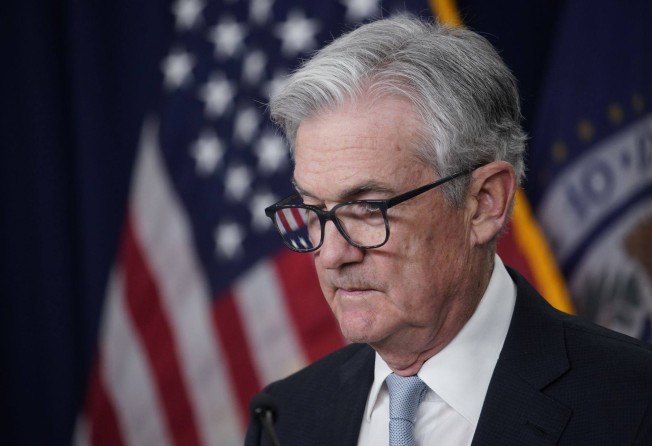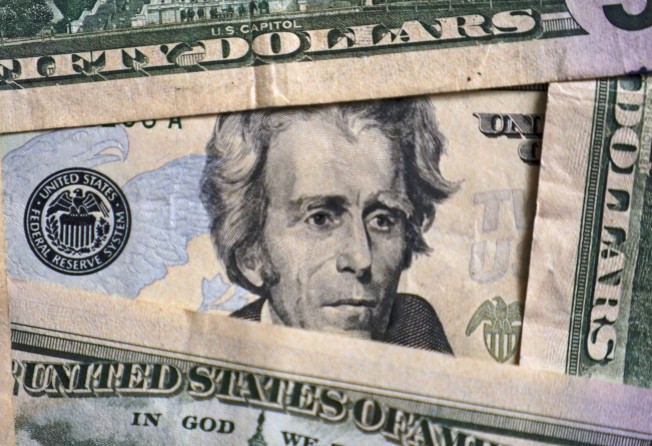
Why the strong US dollar should start coming down to earth soon
- The war in Ukraine and the Federal Reserve’s fight against inflation have made the US dollar the go-to currency for safe-haven protection
- But now that all the bad news is factored in and inflation is slowing down, dollar bulls are starting to hit the exits from the dollar trade

In the foreign exchange markets, there is no such thing as a forever trade and what goes up must inevitably come down. It’s the fundamental law of gravity that once sure-fire bets ultimately reach their zenith, they tend to go into reverse.
The same fate awaits the market’s most-favoured currency bet over the last few years as the strong US dollar trade looks like it has reached the end of the road and it’s just a matter of time before it heads south again.
The war in Ukraine, the deteriorating geopolitical outlook and the US Federal Reserve’s fight against inflation have made the US dollar the go-to currency for safe-haven protection. But now that all the bad news is factored in, dollar bulls are starting to hit the exits from what has been a very overcrowded trade in the past two years. The great unwind is already under way.
Certainly last week’s news that US consumer price inflation slowed more than expected to 7.7 per cent in October, from 8.2 per cent in September, was a shot in the arm for hopes that the headline rate may have peaked at 9.1 per cent back in June.
The other good news was that the core inflation rate, excluding food and energy prices, eased back to 6.3 per cent in October from 6.6 per cent the previous month, underlining that the wave of price rises which has buffeted the United States economy since Russia invaded Ukraine in February may be past its worst.
If that’s the case, then the Fed’s inflation hawks will need to readjust their sights on how far interest rate rises need to go in the current cycle.

Inflation is still well above the Fed’s 2 per cent target, but the slowdown in the last few months will have cast doubts on the central bank’s resolve to keep beating inflation expectations down with its fusillade of 0.75 percentage point rate rises, which it has carried out at four policy meetings in a row.
The Fed may be concerned that it can’t show any weakness in its inflation fight but it cannot afford to keep battering the economy that already dipped into technical recession earlier this year, while recovery hopes are on the ropes. After all, the Fed’s mandate is to maintain sustainable non-inflationary growth and job creation over the future, not provoke a deeper downturn.
The Fed’s tightening cycle, having driven the Fed funds rate from near zero at the start of the year to 4 per cent, is not the only factor that has sharpened monetary conditions in the economy. The Fed is already slimming down its balance sheet after the spree of debt purchases made under its quantitative easing programme, and M1 money supply is already starting to contract.
The rampant dollar has also inflicted a major squeeze on the economy, making US exports much more expensive as the trade-weighted DXY US Dollar Currency Index rose by a massive 27 per cent between early 2021 and its recent high point at the end of September 2022. That’s the monetary equivalent of an extra 6 percentage points added to short-term US interest rates.
Meanwhile, US fiscal policy has become less supportive of growth; the cumulative budget deficit has fallen very sharply this year as government finances have recovered following the Covid-19 crisis. Something needs to give to help turn the tide.
Either the government needs to step up fiscal stimulus again (which is less likely now in the light of last week’s midterm elections and looming gridlock over the budget), or the Fed needs to ease off the monetary brake.
The markets are already starting to sense that change is in the air and the Fed might be close to a pivot soon. After four successive 75-basis-point interest rate rises, the CME’s Fedwatch tool is factoring in an 80 per cent chance of a 0.5-percentage-point rate move at the Fed’s next policy meeting on December 14.
If the Fed’s anti-inflation zeal is starting to cool, hopes will build that the Fed funds rate could peak at 5 per cent early next year. The rate could be down to 4 per cent or lower by end-2023 if recession risk deepens and inflation falls away dramatically.
With precipitating pressure for peace in the air over Ukraine and the Fed close to a top in rates, it should be the beginning of the end for the strong dollar trade.
David Brown is the chief executive of New View Economics